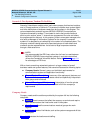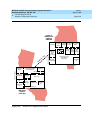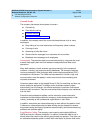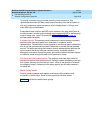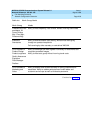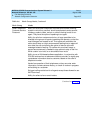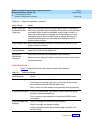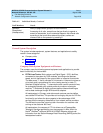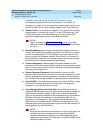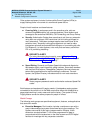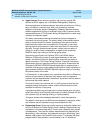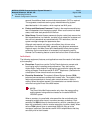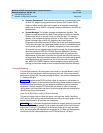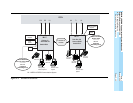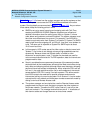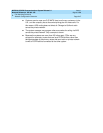
MERLIN LEGEND Communications System Release 6.1
Network Reference
555-661-150
Issue 1
August 1998
Call-Handling Scenarios
Page 2-40Network Configuration Scenarios
2
In addition, each location has one 800 LS/ID line/trunk module.
Loudspeaker paging and Music on Hold connect to this module; an
emergency loop-start line is also connected to each system for use in the
event of a power failure. It also provides needed Touch-Tone Receivers.
■ Tandem Trunks. The systems are linked by 24 T1-emulated tie channels
programmed for voice and data, and a T1 to the PSTN requiring a 100D
module at both sites for private networking, for a total of three 100D
modules at headquarters and two at the West coast office.
NOTE:
Later in this scenario, “Network Planning” on page 44 provides
additional information about how private network facilities and calls
are set up.
■ Extension Modules. Both systems use 008 MLX extension modules to
connect MLX telephones and digital equipment. One MLX port is used to
connect the headquarters’ CTI link hardware, which also links to a LAN
server running Novell NetWare software. Each control unit includes 016
tip/ring extension modules for connecting modems, fax/modems, analog
fax machines, and automated answering applications.
■ Common Equipment. LANs equipped with shared modems and fax
modems serve the data communications needs of many employees at both
sites. They also share common-area fax machines, both high-speed digital
Group IV and analog devices.
■ General Extension Equipment. Each extension includes an MLX
telephone. Most extensions include a PC or terminal connected to a LAN,
sharing digital communications equipment or modems. Some extensions
also include ISDN terminal adapters for high-speed data communications.
■ Intuity AUDIX
®
. The headquarters system has an Intuity AUDIX to supply
centralized voice messaging service for both sites. The application
connects to a 016 tip/ring extension module.
■ Voice Messaging Service for Both Sites. At the West Coast site, an
integrated VMI calling group with a single non-local member is created with
the same main extension number as that of the integrated VMI calling
group for the centralized VMS/AA at the Headquarters site. Extensions at
the West Coast site with mailboxes on the centralized VMS/AA are
assigned to a coverage group. The integrated VMI calling group at the
West Coast site is programmed as the Group Coverage receiver for the
coverage group and is also programmed to provide overflow coverage for
calling groups at the West Coast site.
NOTE:
Since the two systems are connected by tie lines, all calls sent from
the West Coast site to headquarters for centralized VMS/AA
coverage are treated as outside calls and Message Waiting light
updates may be delayed. For better service, use PRI tandem trunks
instead of tandem tie trunks.



